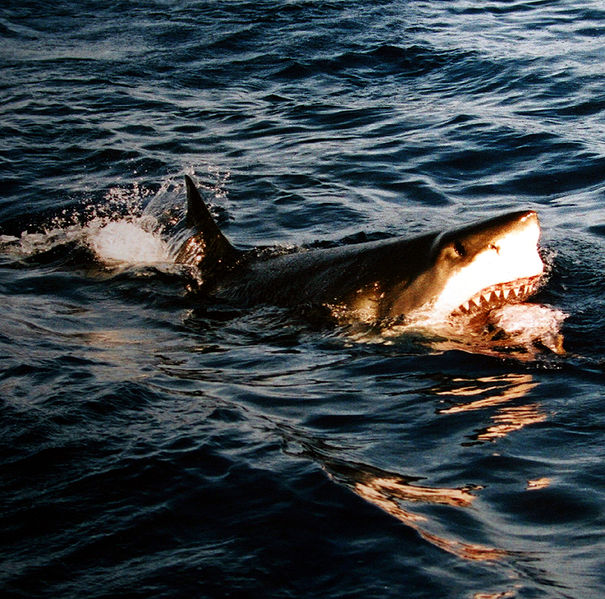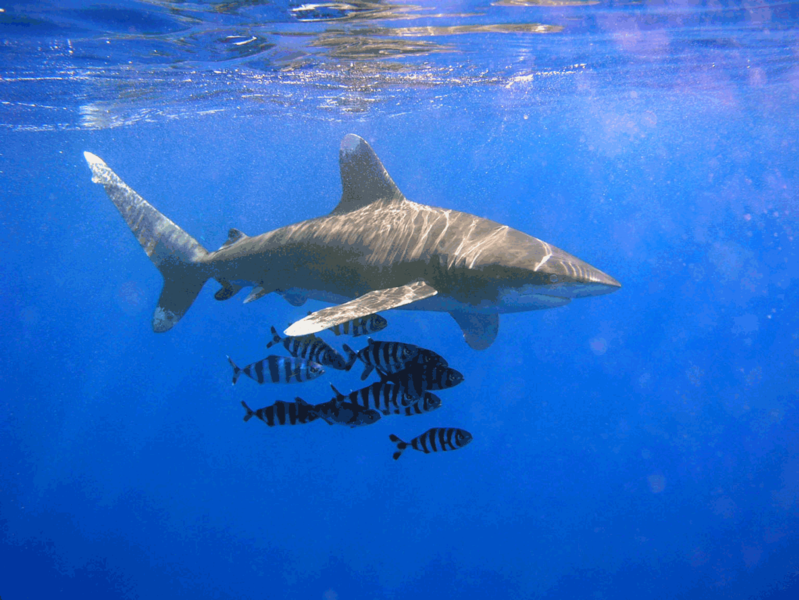Does Burley Change Shark Behaviour?
Interview with
Charlie - So we're looking at the impact of burling - burling being the provision of bait in the water to attract the sharks so that people can undertake cage diving with white sharks for example. We're trying to look at how that burling might impact the behaviour of white sharks. And previous studies have shown that whereas people previously felt the sharks will be conditioned to the burley, the opposite is actually happening where we've got a level of habituation. So what I mean by that is instead of the sharks being attracted by the boat, because of the burley, the sharks get used to the burley, and basically don't react to the burley as much as they did previously.  So if you've got a shark that arrives in an area on the first day of burley, that shark might be attracted to the boat and come around the boat, and be able to be seen by the tourists. After a few days, we know the shark is still in that area through some of the tagging that we do, but it doesn't come close to the boat anymore and that might be due to that habituation and the fact that even though there is burley in the water, there's no reward because the sharks are not being fed by the bait. The bait is being removed on time.
So if you've got a shark that arrives in an area on the first day of burley, that shark might be attracted to the boat and come around the boat, and be able to be seen by the tourists. After a few days, we know the shark is still in that area through some of the tagging that we do, but it doesn't come close to the boat anymore and that might be due to that habituation and the fact that even though there is burley in the water, there's no reward because the sharks are not being fed by the bait. The bait is being removed on time.
Chris - It's a bit like me being attracted by the smell of coffee because I love coffee so I flock to wherever the smell is coming from. Don't get a coffee. Therefore, in the future, I might ignore the smell of coffee.
Charlie - Exactly and there's many other example we can also be using, but that's a good example.
Chris - And obviously, if you start to impact on the behaviour and preferences of a shark like that, it could have impacts presumably on its physiology and on its health.
Charlie - You can have a wide range of impact and you can potentially change some of the behaviour of the sharks which we have to be careful of. It is a relatively large industry here in South Australia, but also around the world. There's cage diving operations happening in South Africa, but also in Guadalupe as well and so, it has implications internationally, and we're just trying to ensure that this kind of operation doesn't impact on the shark but also that the tourists can enjoy this interaction with the wild shark as well. So the more we learn about the sharks, the more we can ensure that this operation is managed sustainably.
Chris - So is there a better way of doing it? Is there a way of attracting the sharks and rewarding them so that they are not being harmed in this way or are you just trying to understand whether we are harming them and therefore, whether we need to do things differently?
Charlie - At the moment, we're trying to understand if we are harming them, but the sharks aren't supposed to be fed during cage diving operations. It's only the smell that would attract the shark to the area. So we're trying to ensure that this activity doesn't really impact on the shark.
Chris - Is there any evidence that it does?
 Charlie - I guess so far, we don't really know and that's the exciting thing about it - we're looking at something that we don't fully understand yet. I guess the important thing is that - we know that the sharks would be there for a reason, but does the burling impact on the reason that they are there? That's what we want to make sure, that we're not changing the reason why they're there, and we know that the sharks still do what it's supposed to be doing while they're there, because they are there for a reason which we don't fully understand. We just don't want to change that.
Charlie - I guess so far, we don't really know and that's the exciting thing about it - we're looking at something that we don't fully understand yet. I guess the important thing is that - we know that the sharks would be there for a reason, but does the burling impact on the reason that they are there? That's what we want to make sure, that we're not changing the reason why they're there, and we know that the sharks still do what it's supposed to be doing while they're there, because they are there for a reason which we don't fully understand. We just don't want to change that.
Chris - And how are you trying to explore that?
Charlie - We're using a variety of techniques, mostly related to acoustic telemetry. Acoustic telemetry uses a combination of receivers and tags which you can put on a shark either internally or externally and it gives us a finer scale movement and resonance time which is the amount of time a shark spends in one area. I've got one of the tags here if you want to have a look at it.
Chris - Sure, go on.
Charlie - So this is one of the acoustic tags. There's two different types of acoustic tags, what we called coder tags and continuous tags. This one is a continuous tag so every second a pulse is being sent that is being received by the receivers, by the listing stations, and which can then give us the location of where the shark is.
Chris - They're not very heavy. It's quite light. It's 6 inches long with a slightly bulbous end. I presume there's a battery in there and then there's the thing that produces the signal that you're then able to pick up.
Charlie - So that bulbous end is actually just a float so that that when we insert it in the shark, it doesn't rub on the skin of the shark and just stays floating on top of it, and this is actually the tag here that has a battery life for this type of tag of about 40 days, but a coder tag that sends a pulse less often will have a battery life of up to 10 years. So we can get information about the movement of sharks for up to 10 years which is really interesting.
Chris - And how do you stick it on?
 Charlie - We'll just use a modified end of a spear and as a shark swims by the boat, we just insert it next to the dorsal fin of the shark.
Charlie - We'll just use a modified end of a spear and as a shark swims by the boat, we just insert it next to the dorsal fin of the shark.
Chris - So it goes under the skin?
Charlie - That's right. It goes into the muscle. This anchor barb here, this goes underneath the skin and the tag itself actually floats just next to the skin of the shark.
Chris - No harm to the shark?
Charlie - Nothing especially in comparison to some of the mating that the sharks have where the male will bite by the female quite hard. So this is pretty much nothing compared to that.
Chris - That sounds like quite an interesting love life. So where do you record the acoustic telemetry points from? Have you got listening posts out at sea and you're therefore resolving trigonometrically where the sharks are in any area in real time so you can keep a sort of 24-hour log if you like, of a shark in that area?
Charlie - That's exactly right. We've got two different systems and one of them is this. It's what we call a VRAP which is a Vemco Radioacoustic Positioning System - a bit of a mouthful! What it does, it's got three receivers that calculate the position of the shark using the difference of the time of arrival. So, basically triangulation and the accuracy of that system is amazing. It would give us an accuracy of about a meter. So we will know within a meter where the shark is and basically how it interacts with the different boats during the cage diving. So we can look at the time partitioning which is the amount of time the shark spends next to each of the boats, to see how the burling changes the behaviour of the shark. Did the shark spend its entire time next to one boat or does it share its time between the two boats? So that if you want to add more boats, you know, will the shark just spend this entire time with one of the five boats in one area? In which case, the other boats might start trying to burly more and more to attract that one shark but because you've got some habituation happening, the shark's going to be less and less responsive to that burling so it's going to stay to that one boat. So the other boat is going to use even more burly and they've got this kind of feedback and it's an escalating effect that might have large ramifications and consequences for the sharks.
Chris - Any surprises emerging yet or is this early days?
Charlie - It's early days at the moment and actually I'm quite excited. We've tagged a few sharks. In a couple of days, I'm going back there to download the data. So, I'm really excited to try to find out what we've found so far and hopefully provide us with good data and good results to be able talk about it.
Chris - Charlie Huveneers - he's from Flinders University in Adelaide.
- Previous Battles Between Bee Sperm
- Next Whale sharks - stars of the sea









Comments
Add a comment